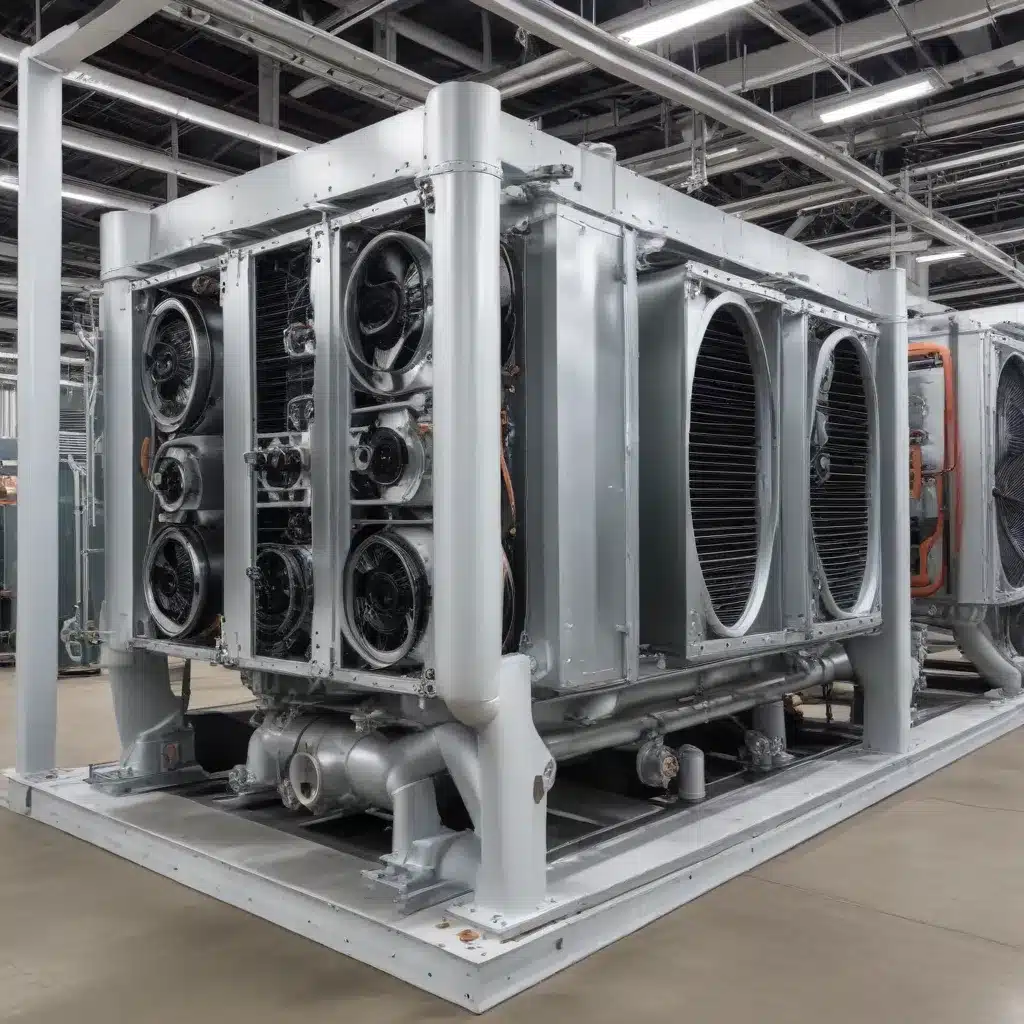
The Evolving Landscape of Industrial Cooling Solutions
As the pursuit of energy efficiency and sustainability intensifies across industries, the role of air-cooled heat exchangers has become increasingly pivotal. These versatile heat transfer systems are poised to play a transformative part in hybrid cooling configurations, offering industrial facilities enhanced flexibility, improved performance, and remarkable energy savings.
Air-cooled heat exchangers have long been a staple in various industrial applications, from HVAC systems to process cooling and refrigeration. However, the growing emphasis on reducing carbon footprints and optimizing energy usage has prompted a re-evaluation of traditional cooling methods. Enter the world of hybrid cooling systems, where air-cooled heat exchangers seamlessly integrate with complementary technologies to create a synergistic and adaptable cooling solution.
Harnessing the Power of Hybrid Cooling
Hybrid cooling systems combine the best aspects of different cooling technologies, leveraging their individual strengths to deliver an optimized, energy-efficient solution. At the heart of these systems are air-cooled heat exchangers, which play a crucial role in improving overall efficiency and flexibility.
Balancing Energy Savings and Reliability
One of the primary advantages of hybrid cooling systems is their ability to strike a strategic balance between energy efficiency and reliable performance. Air-cooled heat exchangers, with their inherent energy-saving capabilities, can handle the majority of cooling loads during moderate weather conditions. This allows the system to capitalize on the energy-efficient nature of air-cooled technology and reduce the reliance on more energy-intensive cooling methods.
However, when faced with extreme weather conditions or peak loads, hybrid systems can seamlessly transition to supplementary cooling sources, such as evaporative coolers or chillers. This flexibility ensures that industrial facilities maintain the necessary cooling capacity to support critical processes, even during the most challenging environmental conditions.
Enhancing Adaptability and Customization
The modular design of hybrid cooling systems, featuring air-cooled heat exchangers, enables a high degree of adaptability and customization. Industrial operators can tailor the system’s configuration to their specific needs, incorporating additional cooling components or adjusting the balance between air-cooled and other cooling technologies.
This adaptability is particularly valuable in industries that experience fluctuating cooling demands or operate in diverse geographical regions. By leveraging the versatility of air-cooled heat exchangers, hybrid systems can be optimized to accommodate changes in production schedules, seasonal variations, or evolving facility requirements.
Optimizing Air-Cooled Heat Exchanger Performance
To fully harness the benefits of air-cooled heat exchangers in hybrid cooling systems, it is crucial to understand the intricacies of their design, maintenance, and performance optimization.
Innovative Design Considerations
Advancements in air-cooled heat exchanger technology have introduced a range of design features that enhance their efficiency and versatility. Strategies such as incorporating variable-speed fans, adiabatic cooling, and specialized coil configurations have enabled these heat exchangers to operate with greater energy efficiency and adapt to varying environmental conditions.
| Design Feature | Benefit |
|---|---|
| Variable-speed fans | Allows for precise fan speed adjustment, reducing energy consumption during part-load conditions. |
| Adiabatic cooling | Utilizes evaporative pre-cooling to boost heat transfer effectiveness, particularly in hot and dry climates. |
| Specialized coil configurations | Optimizes air and fluid flow patterns for enhanced thermal performance and reduced pressure drop. |
These design innovations contribute to the overall efficiency and adaptability of air-cooled heat exchangers, making them well-suited for integration into hybrid cooling systems.
Preventive Maintenance and Troubleshooting
Proper maintenance and troubleshooting procedures are crucial for ensuring the long-term reliability and optimal performance of air-cooled heat exchangers within hybrid cooling systems. Regular inspections, cleaning, and proactive maintenance of key components, such as fans, coils, and control systems, can help maintain high efficiency and extend the lifespan of these critical assets.
Additionally, addressing common issues, such as airflow obstructions, fouling, or refrigerant leaks, can help optimize the heat exchanger’s performance and prevent unexpected downtime. By implementing a comprehensive maintenance program, industrial facilities can leverage the full potential of air-cooled heat exchangers in their hybrid cooling systems.
Unlocking the Benefits of Hybrid Cooling with Air-Cooled Heat Exchangers
The integration of air-cooled heat exchangers into hybrid cooling systems offers a range of benefits that can significantly impact the energy efficiency and operational flexibility of industrial facilities.
Enhanced Energy Efficiency
Air-cooled heat exchangers, with their inherent energy-saving capabilities, serve as the backbone of hybrid cooling systems, enabling them to achieve remarkable energy savings compared to traditional cooling methods. By leveraging the air-cooled technology during moderate weather conditions and transitioning to supplementary cooling sources when necessary, hybrid systems can minimize overall energy consumption and reduce the facility’s carbon footprint.
Improved Flexibility and Adaptability
The modular design and customization options of hybrid cooling systems, centered around air-cooled heat exchangers, allow industrial facilities to tailor the cooling solution to their unique requirements. This adaptability enables operators to accommodate fluctuating cooling demands, adapt to changing production needs, and respond to evolving environmental conditions.
Reliable Performance in Diverse Climates
Hybrid cooling systems, with their ability to seamlessly integrate air-cooled heat exchangers and supplementary cooling technologies, provide reliable performance across a wide range of climatic conditions. This versatility ensures that industrial facilities maintain consistent cooling capacity, even during extreme weather events or peak load scenarios, safeguarding critical processes and maintaining operational continuity.
Embracing the Future of Industrial Cooling with Air-Cooled Heat Exchangers
As industries strive to enhance energy efficiency, reduce environmental impact, and maintain operational resilience, the role of air-cooled heat exchangers in hybrid cooling systems has become increasingly pivotal. By leveraging the inherent advantages of air-cooled technology and integrating it with complementary cooling methods, industrial facilities can unlock a new era of energy-efficient, flexible, and reliable cooling solutions.
The Air Cooled Heat Exchangers blog is dedicated to providing in-depth insights, practical tips, and the latest advancements in this rapidly evolving field. Stay tuned for more articles exploring the transformative impact of air-cooled heat exchangers and their critical role in shaping the future of industrial cooling.

